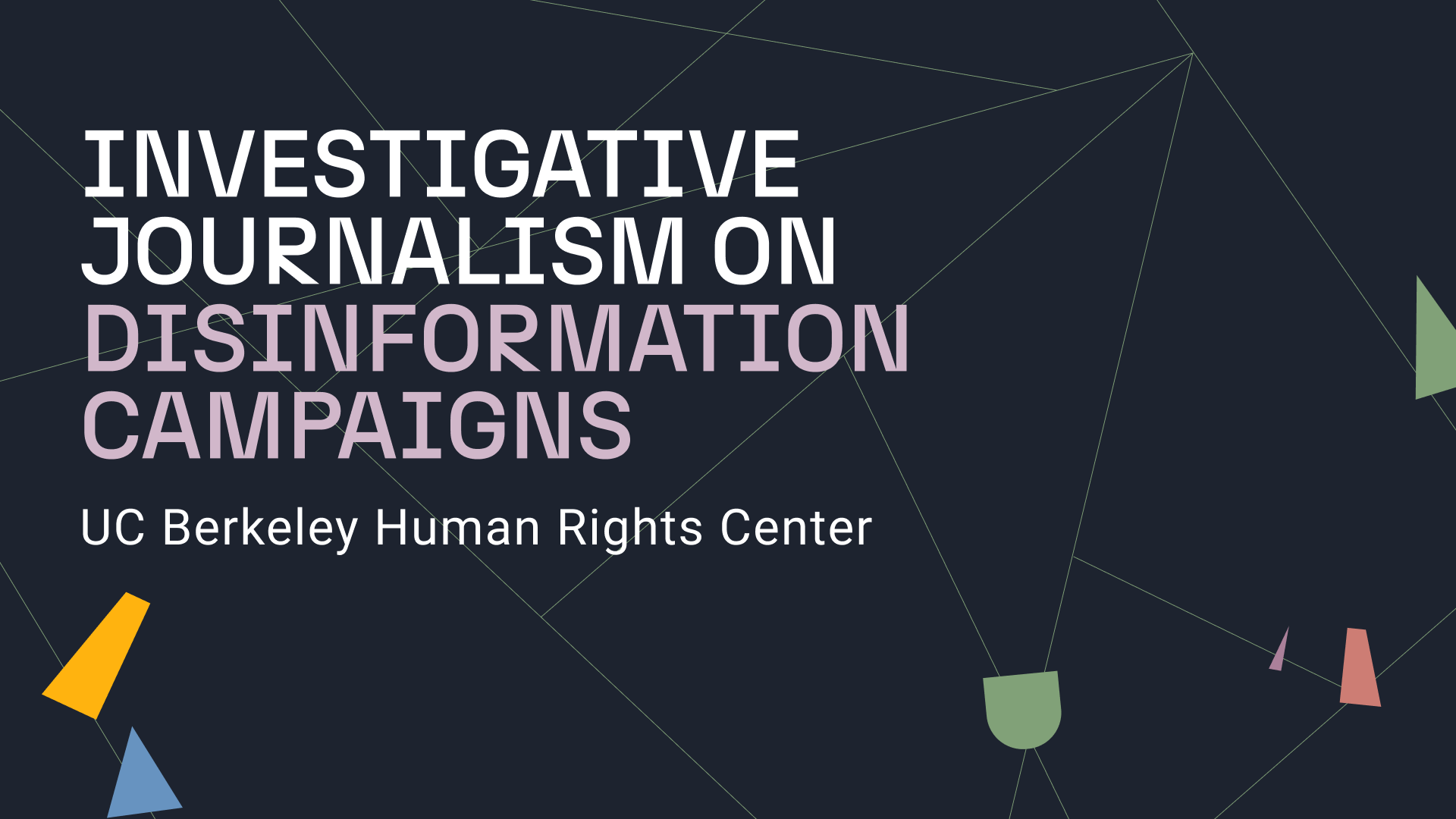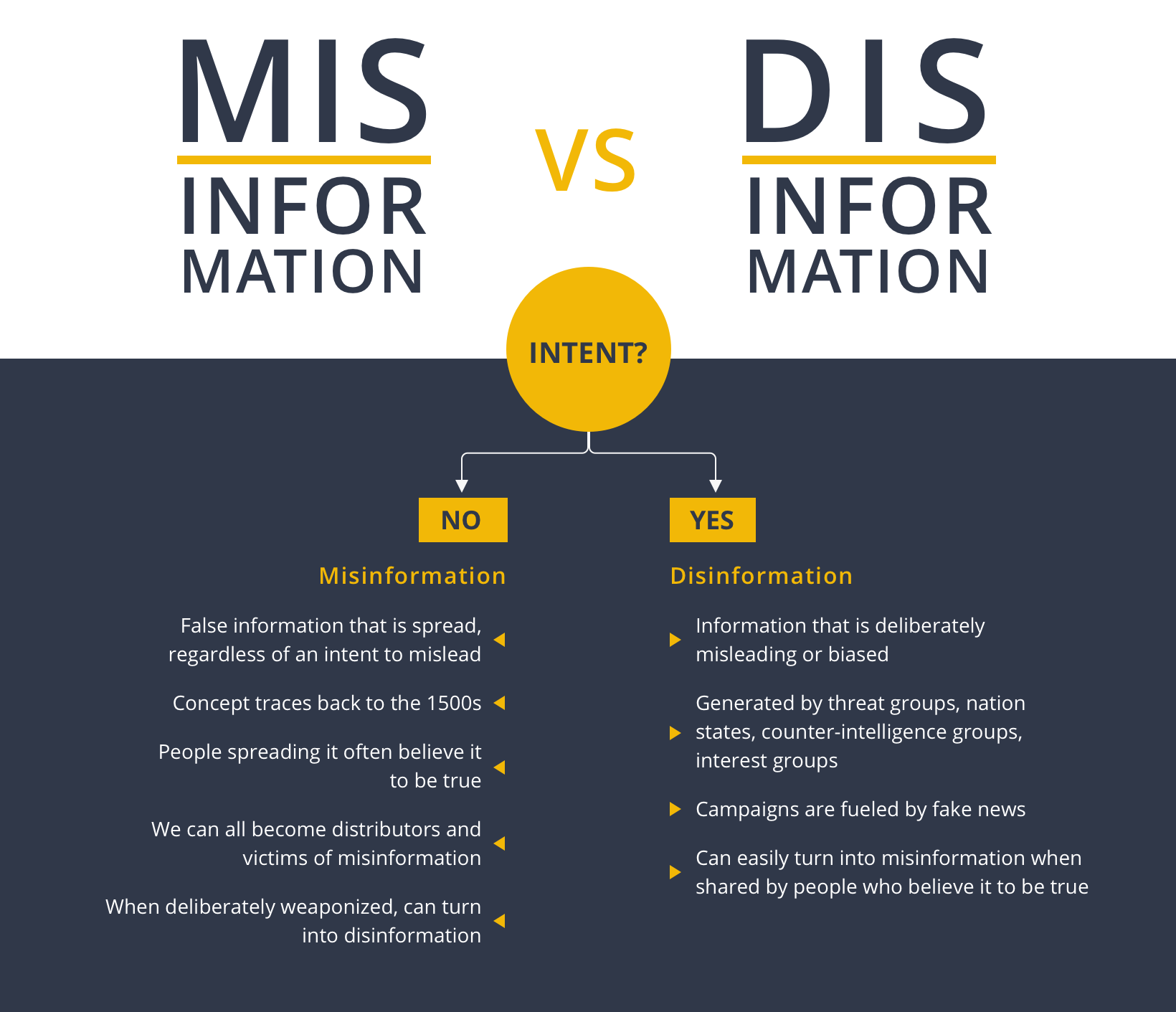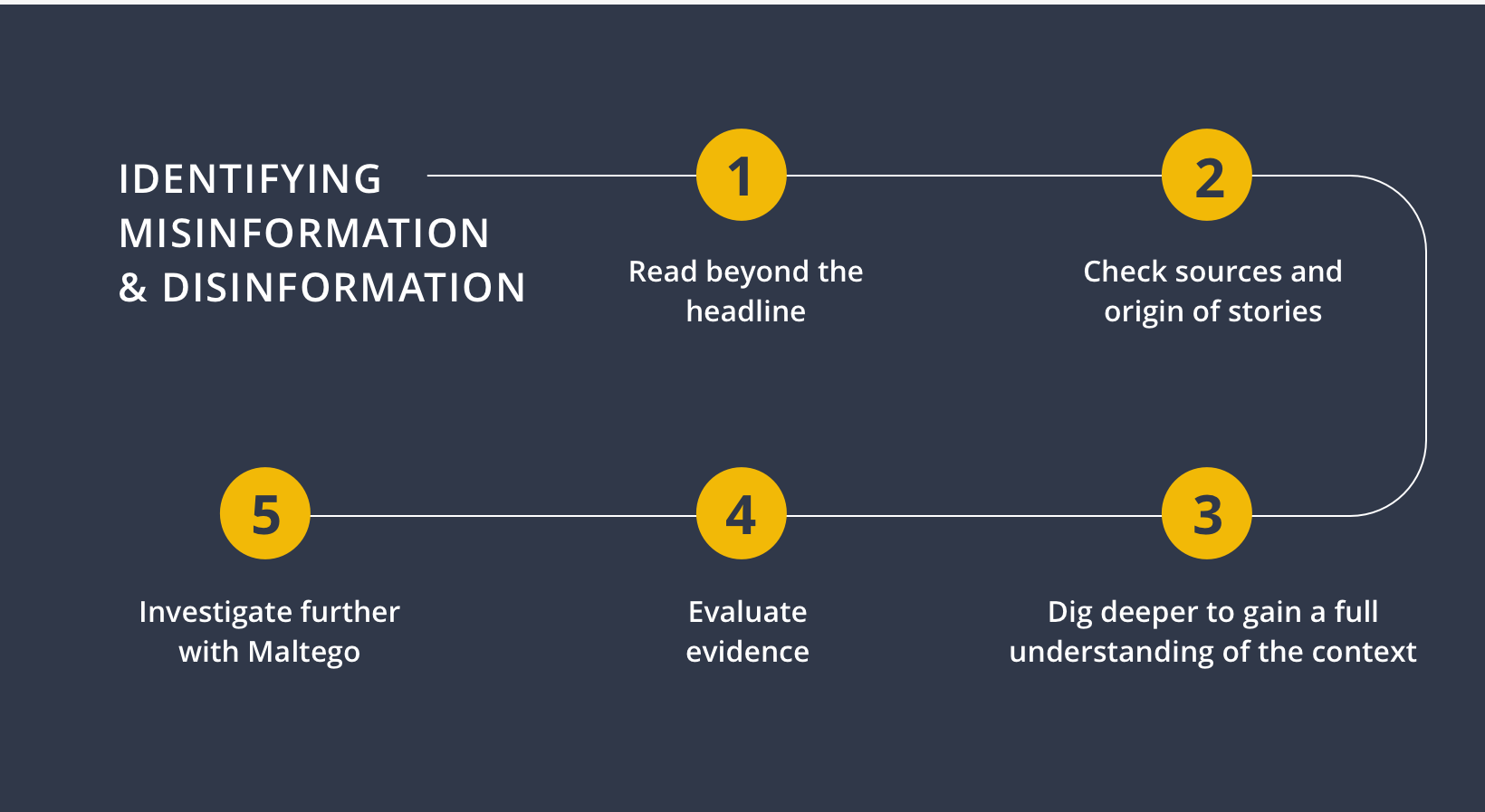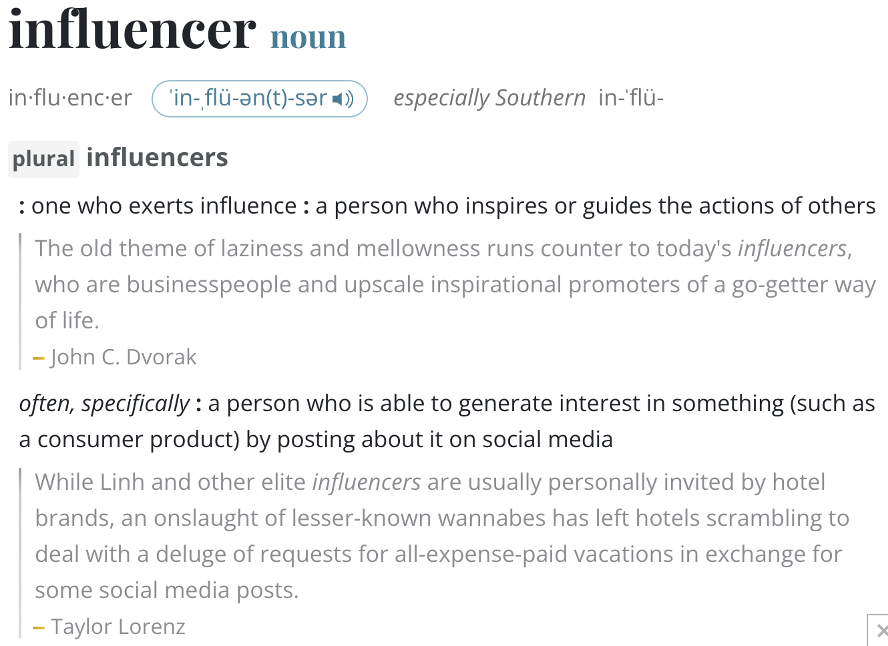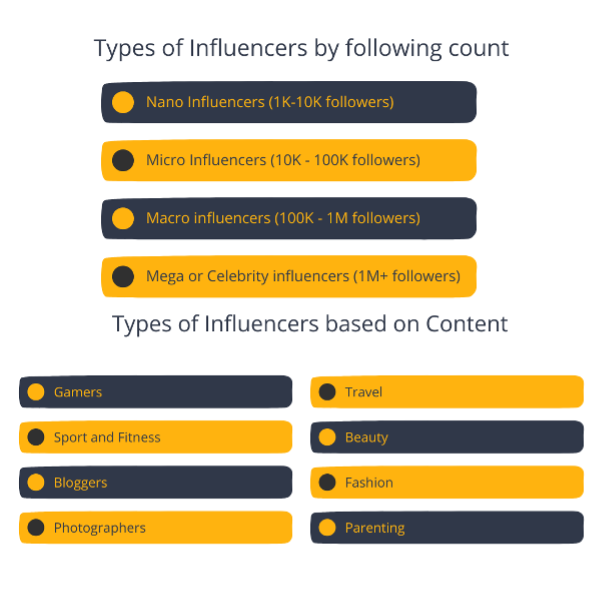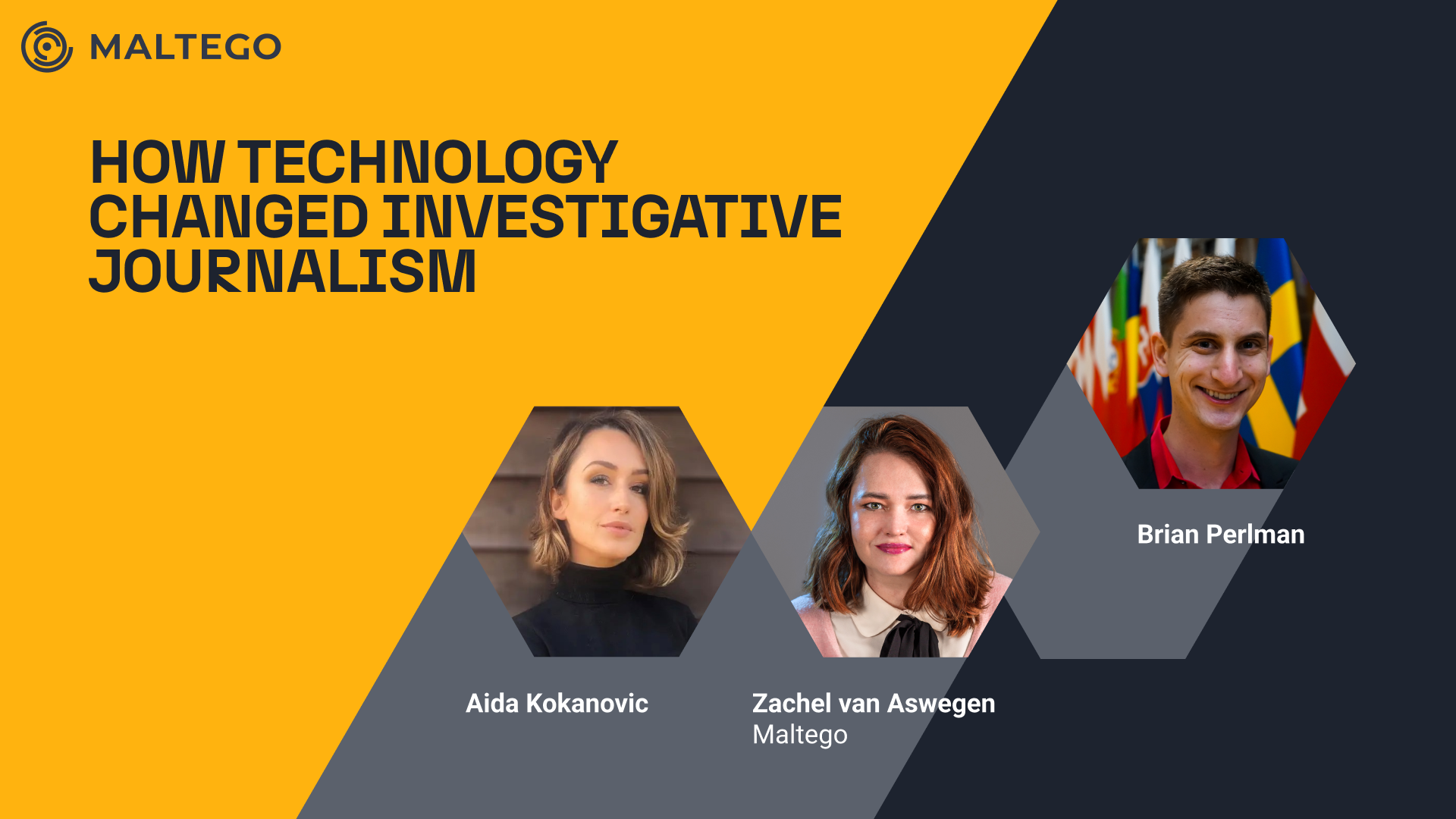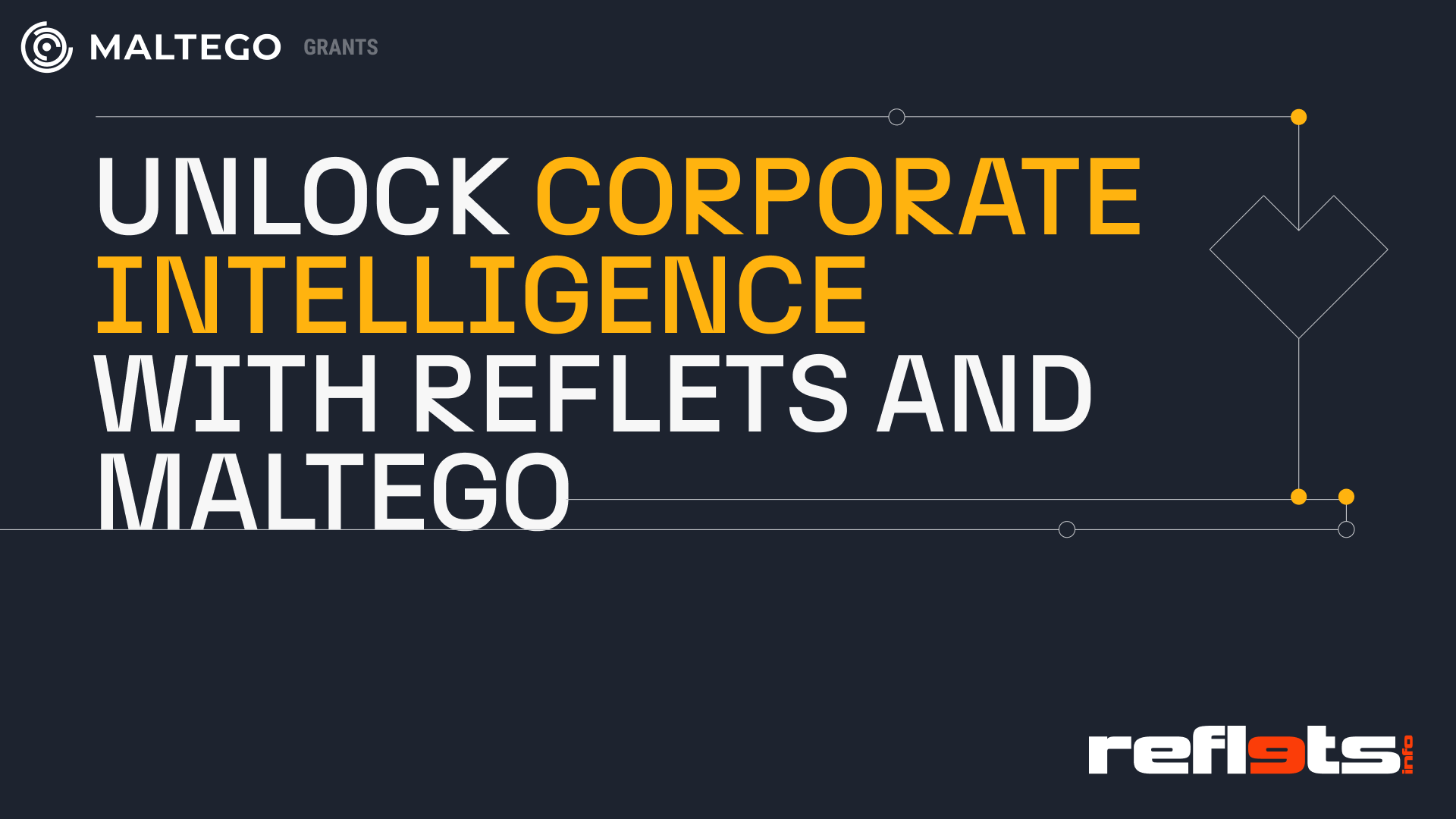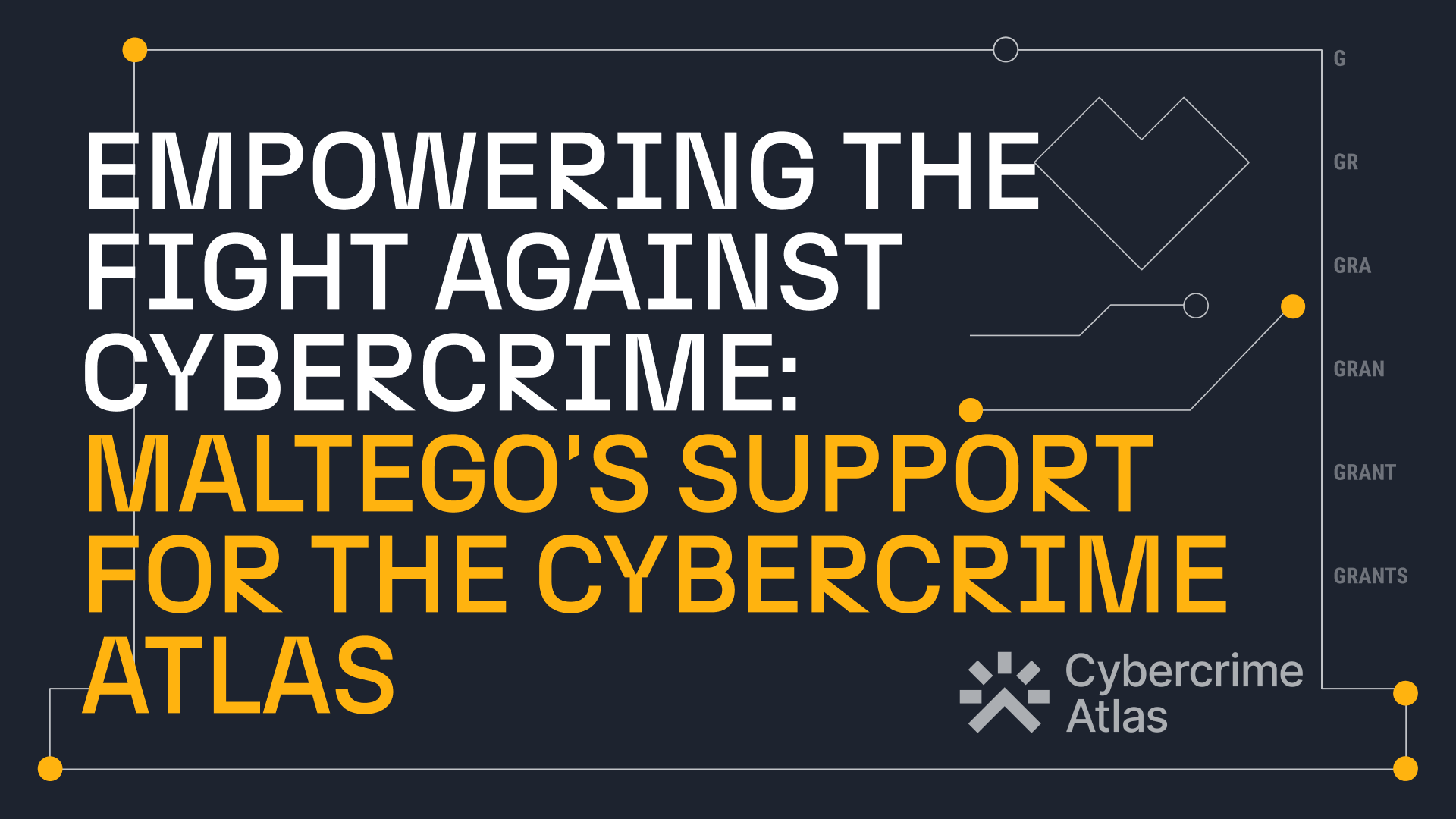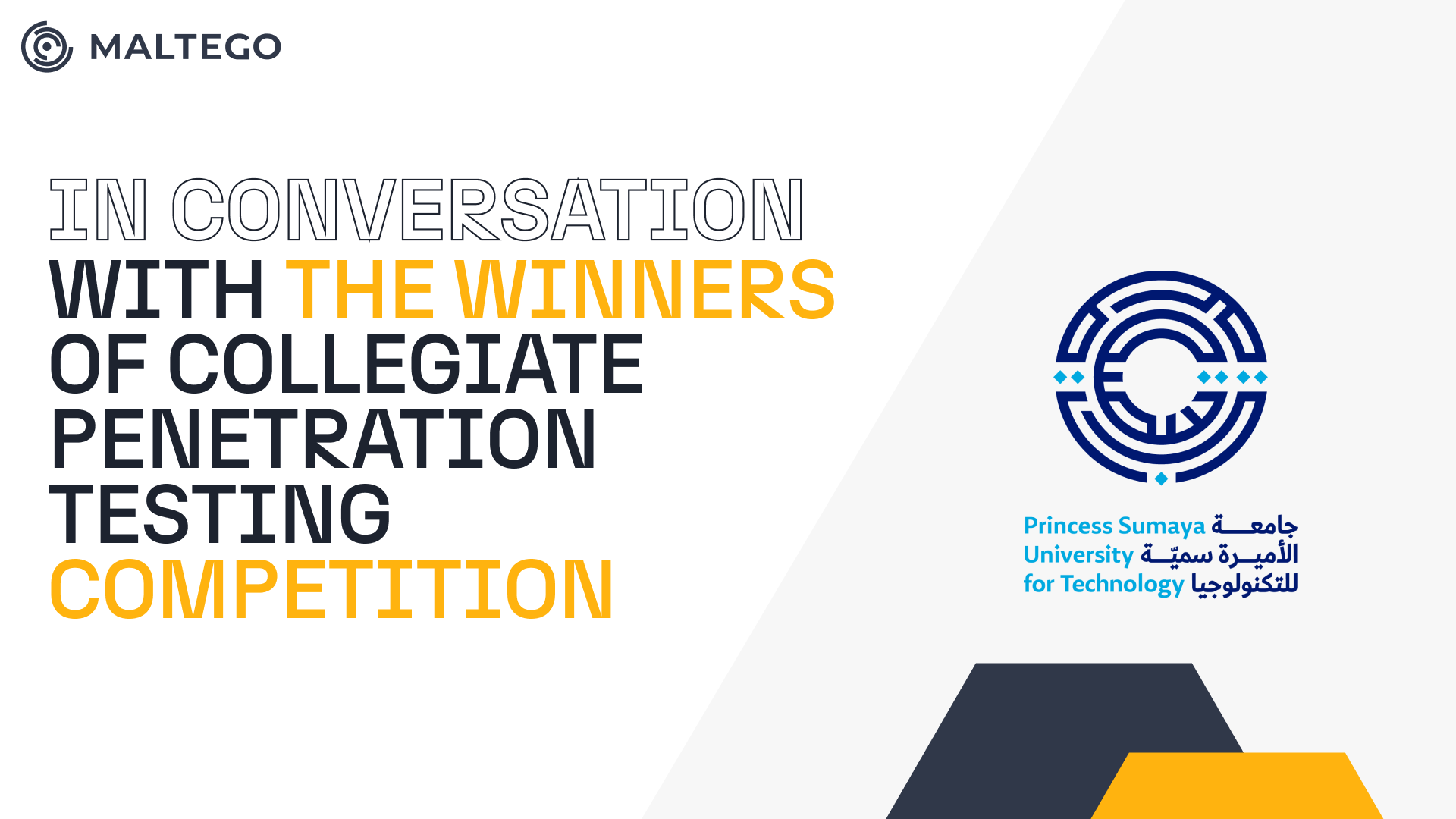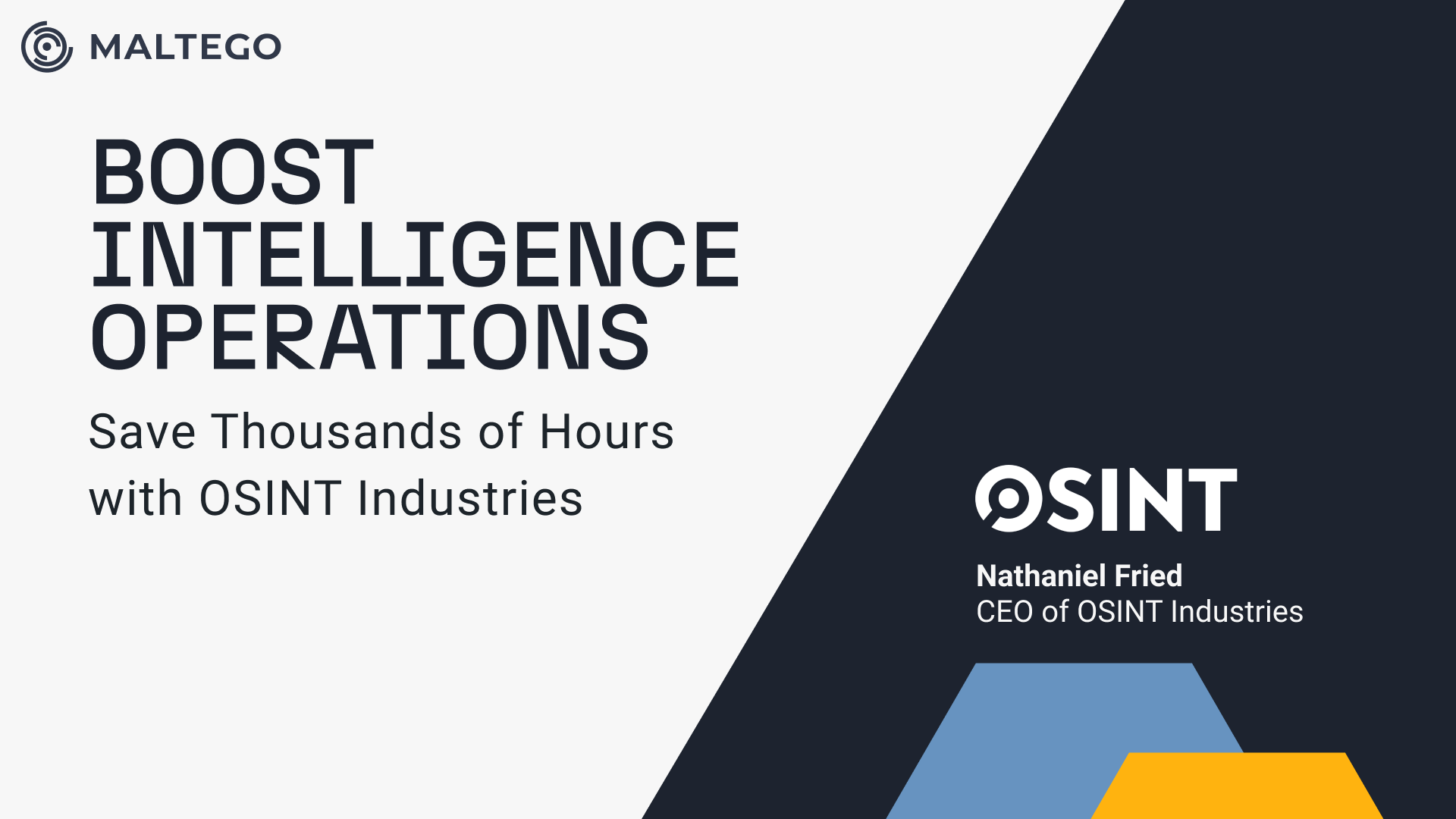On November 2nd, the Maltego Academic and Non-Profit Research Program had the great pleasure to host a webinar with guest speakers, Gisela Pérez de Acha and Stephanie Croft, from the Human Rights Center of UC Berkeley. They presented us with a very recent, interesting use case about how to identify and track misinformation and disinformation campaigns using Maltego.
The webinar discussed:
- The definition and differences between misinformation and disinformation;
- How to structure a story that starts with TikTok videos and manually plot it into Maltego
- How to get the most information out of obscure tax registries and webpages
Unmasking Main Players Behind a Misinformation Network 🔗︎
The UC Berkeley Human Rights Center’s reporting focuses on tracking medical mis/disinformation regarding hormonal birth control. The investigation started after the overturning of Roe vs. Wade by the U.S. Supreme Court in June 2022. Misinformation and disinformation around birth control are not new, but, after the events in June, the topic gained mainstream traction among young TikTok, Instagram, and YouTube influencers.
What caught UC Berkeley’s attention was the very young age of the social media influencers participating in the spread of misinformation, and the fact that they are talking in a very knowledgeable, relatable manner about the misinformed topic – hormonal birth control. The misinformation campaign, fueled by the hypothesis that hormonal birth control causes abortions, moved eventually from an online context to offline public spaces.
The case study presented by Gisela and Stephanie is framed within the context of investigative report. The investigative team was very diverse, and the spectrum of experts consulted for the research included legal experts, scientists, computer scientists, and journalists, which provided a broad and enriching perspective for the report.
The researchers delved into how policymakers, health care systems, media, and key players come to face with this specific misinformation, and how these campaign messages lacked scientific basis. The goal of the research was also to identify how the misinformation campaigns were organized and funded.
About UC Berkeley Human Rights Center 🔗︎
The Human Rights Center at the University of California, Berkeley, School of Law conducts research on war crimes and other serious violations of international humanitarian law and human rights. Using evidence-based methods and innovative technologies, they support efforts to hold perpetrators accountable and to protect vulnerable populations. They also train students and advocates to research, investigate, and document human rights violations and turn this information into effective action.
The Maltego Academic & Non-Profit Research Program 🔗︎
With the Maltego Academic and NGO program, Maltego aims to encourage continued innovation within the Maltego community. We empower highly motivated and talented individuals who can help create awareness of our tool and create user-based knowledge around Maltego in relevant and important topics.
Maltego supported UC Berkeley Human Rights Center as part of the Academic Program with the investigative resources required for this investigation.
A Quick Intro: Misinformation, Disinformation? 🔗︎
The American Psychological Association (APA) defines misinformation as “false or inaccurate information — getting the facts wrong” and disinformation as “false information that is deliberately intended to mislead — intentionally misstating the facts”. Misinformation can occur due to negligence and is deemed a natural occurrence.
On the other hand, disinformation is distinct in that it is intentional and fueled by a specific reason. The primary difference between the two is in the intent of the action. Disinformation is false information that is intended to mislead — by misstating, misleading, and attempting to propagandize.
To identify misinformation and disinformation, it is utterly important to:
- Read beyond the headline. Most of the time the titles are catchy and impactful, but they don’t reflect the body of the news story, report, or research.
- Check the sources and origin of the stories.
- Dig deeper to gain a full understanding of the context.
- Evaluate the evidence provided for statements of fact.
- Investigate further with an information gathering tool like Maltego.
Scrolling Through A Disinformation Network on TikTok 🔗︎
UC Berkeley Human Rights Center’s investigation started with Tiktok videos to identify the organizations behind the disinformation campaign and to further research into where their funding came from.
Before we dive into the use case, let’s take a minute or two to learn more about influencers. What is an influencer?
Source: Merriam-Webster
Nowadays, taking into consideration the era in which we live, the dictionary definition of “influencer” is too vague. If you close your eyes and say “influencer” three times in a row, the visuals around your head will most likely include a tweeting bird, catchy choreography, or a lot of highly filtered photos. We associate influencers with social media platforms, unboxing videos, product placements, and giveaways.
So, what makes an influencer? Magnetic personality or good looks aside, influencers are characterized and categorized by these “following count” and “content” criteria:
Source: Types of Influencers
The research team identified a number of key TikTok and YouTube videos spreading such misinformation to start their analysis. Upon identifying influencers who seemed to be leading the campaign, they queried a social media intelligence data source and OpenCorporates in Maltego to gather information of the campaign actors behind the scenes. They also utilized public tax information to further dig into the target organizations’ structures and stakeholders, as well as academic articles as leads to broaden their research.
From the corporate research, the investigation pivoted to other social media accounts and organizations. By adding new pieces of information, Maltego started showing links between the actors they were looking at. At the end of their research, they discovered that the influencers spreading misinformation and a doctor mentioned in multiple academic articles were connected through an umbrella organization under the organizations behind the TikTok videos.
Watch the webinar now to see a step-by-step walkthrough of the investigation.
In Journalism, The Story Drives The Tools 🔗︎
Gisela and Stephanie shared that, as journalists, what they look for are stories. Stories like a social or policy problem, a story that can be explained or exemplified by a character, who represents one of many within the problem. What puts a story together is a mix between a research question and the methodology or approach a journalist employs to answer that question.
For Gisela and Stephanie, it is imperative that the story drives the tool, rather than the tool driving the story. However, the tool is crucial to achieving a goal in a timely and successful manner.
Gisela pointed out that being able to map information visually was extremely useful and important. They were a very large team that was working separately. But, when they merged of all the different pieces of information, the matches, links, and patterns were almost immediately visible.
Stephanie also highlighted that OpenCorporates and Maltego research techniques were useful for the classes she was teaching. These tools have proven to be helpful in the case of investigating pyramid schemes and a variety of other investigations.
What Journalists Look for in A Story 🔗︎
Gisela mentioned that there are many types of stories, but in disinformation stories, the editors want to see who the “ultimate creator” of the falsehood or conspiracy elements are, and who is financing these campaigns. The research team wanted to determine if the videos were a mere movement of teenagers on TikTok or if there was a bigger organization behind them, purposely making claims that cannot be validated by science. Their final Maltego graph plotted all the organizations, actors, and important details involved in this particular misinformation campaign. The investigation included DNS analysis of some of the web pages, but for privacy reasons, this information has been blurred. For the investigators, it was crucial to visualize how all the information from different research cells goes back to the source – a video on TikTok or YouTube.
How Much Of The Research Was OSINT 🔗︎
The investigation started in an online context as the misinformation campaign began among different social media platforms, and from there move to a different sphere. To locate the key actors behind the virtual content, the investigators had to dive into videos, posts, websites, and profiles to start the mapping of these campaigns, and find the connection between the virtual and the physical world. The investigators consider that 70-80% of the investigation was driven by OSINT and the rest was by contacting experts to triangulate sources as much as they could.
Methodology to Comb Through Mass Digital Evidence & Why They Use Maltego 🔗︎
After starting with an Alias entity and after a couple of clicks, the first graphic started to populate. As the research progressed, it began to pivot between corporate research, social media research and links with academia and other organizations. The advantage that the different cells of the research team found with Maltego was not only the speed with which they were able to locate the information, but by linking the multiple graphs they were working with, the patterns and connections between different areas became visible.
In this way, Maltego helped to structure how to get from point A to point Z, and it became easier and more obvious to identify valuable information for the research. In Gisela’s words, by mind-mapping your results you can go above and beyond the very basics of what you are seeing.
How They Fact-Check Conclusions 🔗︎
The research team had to make a lot of phone calls to double-check their sources. As they noted, the scientific context may be around the credibility of the journal, the process of how journals are peer-reviewed, who their panel members are, and what their processes are. The fact-check included how much the reviewers looked into the original data, how they ranked it and if there were citations from another articles. It is also really important to then go to the citations and then see whether that has been challenged.
It’s not just important to consider the possibility that this is scientific misinformation; you need also deliberately incorporate it into your reporting and research methods. This way, you won’t simply focus on one hot topic but will apply the same standards to all sources and viewpoints.
Ethical Approach in Journalism 🔗︎
This is a topic that has been discussed before in the previous Maltego Academic Webinar, “How Technology Changed Investigative Journalism.” The ethical standard in journalism is getting to the facts, checking your own biases, placing yourself constantly in the position of reporting against your own hypothesis, and asking the question “what if we’re wrong?”
We have to work under an ethical framework to maintain the integrity of what we do and that’s common across many fields of practice, and investigation practices and very interesting of course in the field of digital investigations.
Gisela Pérez de Acha 🔗︎
They recommended taking a look at the Berkeley Protocol on Digital Open Source Investigations, where there’s a chapter on ethics there that it’s worth checking out.
To learn more about investigative journalism, check out our other Academic Partner’s take on How Technology Changed Investigative Journalism.
In this episode of The Pivot podcast, Gisela also shared her personal experiences and challenges she encountered as a journalist. Check out the interview highlight here.
Don’t forget to follow us on Twitter and LinkedIn and sign up to our email newsletter, so you don’t miss out on updates and news!
Happy investigating!


 4.5 rating
4.5 rating


